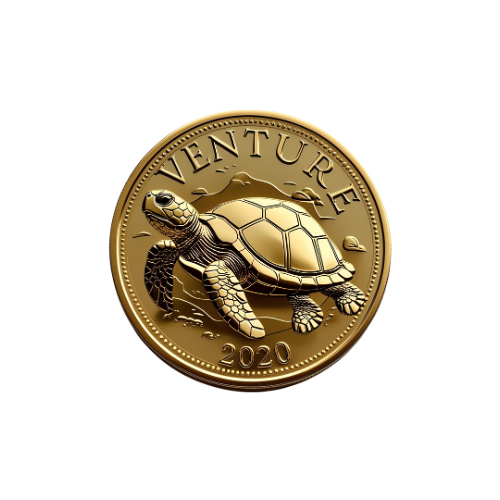From Vision to Victory: A Project Planning Blueprint
Any new endeavor, big or small, thrives on careful planning. When embarking on a project, think of it as starting with a blank slate, clearing out the "muck and dross" – the unnecessary clutter and distractions – to create space for clarity and purpose (Allen, 2020). This initial decluttering isn't just physical; it's a mental reset that paves the way for a successful journey.
The Project Planning Process: A Step-by-Step Guide
Here's a comprehensive framework to guide you through any project, from conception to completion:
Define Your Vision: Begin by outlining your initial intentions. Allow yourself to dream a little, but avoid overthinking at this early stage. This initial vision, though perhaps unrefined, sets the foundational direction (Sinek, 2011).
Visualize and Clarify: Take time to vividly imagine the desired outcome. This mental picture may evolve, but defining it upfront provides a clear target. Beyond the visual, articulate the core reason and purpose behind the project. Understanding your "why" is a powerful motivator (Covey, 1989).
Document and Blueprint: Get your ideas out of your head and onto paper or a digital canvas. Write notes, sketch diagrams, collect inspiring images – whatever helps solidify your goal. This is the stage to create a preliminary list of ideas and develop a basic blueprint or outline. Remember, this is a living document and can change as the project progresses.
Compartmentalize into Mini-Projects: Large projects can quickly become overwhelming. Break them down into smaller, more manageable sections or categories. Each category then becomes a "mini project" with its own achievable milestones. This approach prevents burnout and fosters a sense of consistent progress (Collins, 2001).
Gather Your Resources: Identify and assemble all necessary tools, supplies, and materials. If your project requires collaboration, this is the time to identify and assemble your team, ensuring you have the right talent and support in place.
Begin with the End in Mind (and Clear Out the Old): As you start, visualize the completed project. This perspective helps you make decisions along the way. Part of "beginning with the end in mind" involves a systematic cleaning away of old things that didn't work or are no longer usable. Sort through items, separating what's trash, what's salvageable, and what's essential for the next steps forward (Keller & Papasan, 2013).
Examine Your Progress: Periodically pause to assess your work. Reflect on where you started versus your current position. Ask yourself: "Am I where I thought I would be?" This critical self-assessment is vital for staying on track.
Adjust, Implement Change, or Reimagine: If necessary, be prepared to adjust your approach, implement changes, or even reimagine aspects of the project. The goal is continuous forward movement. During this contemplative stage, look for any hidden tasks or details that might emerge, as these could significantly impact the outcome, better or worse. Decide if such a revelation constitutes a new, separate project or a critical missing link for the current one's success.
The Pause for Decision: This is a crucial checkpoint. Evaluate your current status and determine what further steps are required. Is this project truly complete, or has it spawned a new, distinct endeavor?
Embrace Resilience During Challenges: It's common to face unexpected setbacks near completion – the "tightrope moment" where disaster seems to strike. The key is resilience. Instead of giving up, adjust your plan and keep pushing forward. Adaptability is paramount (Duckworth, 2016).
Fine-Tuning: With a critical eye, review every area of your project. Ask: "Does this specific area need more attention or refinement?"
Fill the Gaps & Refine: Identify what's needed to bridge any remaining gaps. Create a new "To Do" list if necessary, focusing on these final details. This fine-tuning phase leads to increased focus, quicker completion, and allows you to truly enjoy the fruits of your labor.
Cultivate Gratitude and Confidence: As each project concludes, take a moment to pause and express gratitude. This practice fuels motivation for future endeavors and builds significant confidence in your abilities (Emmons & McCullough, 2002).
Final Assessment and Adjustment: Before deeming the project finished, conduct a final comprehensive assessment. Make any last-minute adjustments to ensure it meets your initial vision and quality standards.
Start Small, Learn Big
To internalize this process, begin with a small project. For instance, organizing your desk is an excellent starting point. The principles apply equally to a major undertaking like cleaning and organizing your entire garage. Regardless of size, every project benefits from the initial "clearing of the space" – blank-slating your area and then reimagining its completed state.
Good luck on your project journeys!
References
Allen, D. (2020). Getting Things Done: The Art of Stress-Free Productivity (Revised ed.). Penguin Books.
Collins, J. (2001). Good to Great: Why Some Companies Make the Leap...And Others Don't. HarperBusiness.
Covey, S. R. (1989). The 7 Habits of Highly Effective People. Simon & Schuster.
Duckworth, A. (2016). Grit: The Power of Passion and Perseverance. Scribner.
Emmons, R. A., & McCullough, M. E. (2002). Counting blessings versus burdens: An experimental investigation of gratitude and subjective well-being in daily life. Journal of Personality and Social Psychology, 84(2), 377–389.
Keller, G., & Papasan, J. (2013). The ONE Thing: The Surprisingly Simple Truth Behind Extraordinary Results. Bard Press.
Sinek, S. (2011). Start with Why: How Great Leaders Inspire Everyone to Take Action. Portfolio/Penguin.
